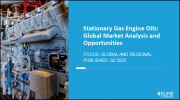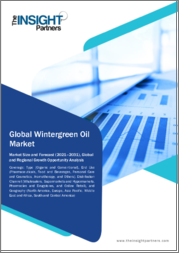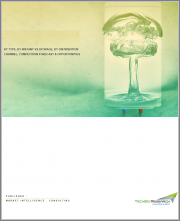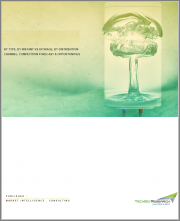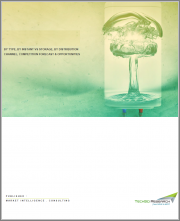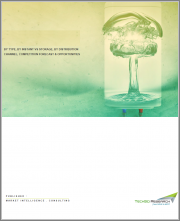
|
시장보고서
상품코드
1585258
세계의 자동차용 엔진 오일 쿨러 시장 : 유형별, 구조별, 유통 채널별, 차종별 예측(2025-2030년)Automotive Engine Oil Cooler Market by Type (Oil-to-air, Oil-to-water), Construction (Brazed Plate, Shell & Tube), Distribution Channel, Vehicle Type - Global Forecast 2025-2030 |
||||||
자동차용 엔진 오일 쿨러 시장은 2023년에 77억 달러로 평가되었고, 2024년에는 84억 달러에 달할 것으로 예측되며, CAGR 9.54%로 성장해 2030년에는 145억 8,000만 달러에 이를 것으로 예측됩니다.
자동차용 엔진 오일 쿨러 시장의 범위와 정의에는 엔진 오일에서 여분의 열을 방출하여 열 에너지를 관리하고 엔진의 성능과 효율을 높이기 위해 설계된 부품이 포함됩니다. 세계의 기온 상승과 엄격한 배기가스 규제 중, 자동차의 수명과 효율을 향상하는 것이 요구되고 있기 때문에 그 필요성이 발생하고 있습니다. 고성능 자동차, 대형 트럭, 가혹한 조건 하에서 작동하는 기계에 매우 중요합니다. 자동차 기술의 급속한 진보, 자동차 유지 보수에 대한 의식 증가, 효율적인 열 관리 시스템을 필요로하는 전기자동차와 하이브리드 자동차의 생산 급증 등을 들 수 있습니다. 알루미늄 합금이나 복합재료를 사용한 경량 고효율 쿨러 개발에는 큰 비즈니스 기회가 있기 때문에 기업은 이러한 분야의 연구 개발을 활용할 수 있습니다. 시장 확대도 기대할 수 있습니다. 그러나 주요 한계와 도전에는 고도의 냉각 기술과 관련된 높은 비용, 원료 가격의 변동, 재료의 사용과 배출에 관한 정부의 엄격한 규제 등이 있습니다. 예지보전을 위해 스마트 센서와의 통합에 있습니다. 시장의 성격에 대한 통찰력에 따르면 선진 지역의 성숙한 부문와 OEM과 애프터마켓 모두 수요에 견인되는 신흥 지역의 성장 가능성이 결합되어 있습니다. 지속적인 R&D 투자 및 전략적 파트너십 형성으로 기업은 업계의 역동적인 요구에 대응하고 잠재적인 시장 잠재력을 효과적으로 활용하여 지속적인 성장을 실현할 수 있습니다.
| 주요 시장 통계 | |
|---|---|
| 기준년(2023) | 77억 달러 |
| 예측년(2024) | 84억 달러 |
| 예측년(2030) | 145억 8,000만 달러 |
| CAGR(%) | 9.54% |
시장 역학: 빠르게 진화하는 자동차용 엔진 오일 쿨러 시장의 주요 시장 인사이트 공개
자동차용 엔진 오일 쿨러 시장은 수요 및 공급의 역동적인 상호작용에 의해 변모를 이루고 있습니다. 결정, 새로운 비즈니스 기회를 획득 할 수 있습니다. 이러한 동향을 종합적으로 파악함으로써 기업은 정치적, 지리적, 기술적, 사회적, 경제적인 영역에 걸친 다양한 리스크를 경감할 수 있음과 동시에 소비자 행동과 그것이 제조 비용과 구매 동향에 미치는 영향을 보다 명확하게 이해할 수 있습니다.
- 시장 성장 촉진요인
- 자동차의 효율적이고 안전한 운전에 대한 요구 증가
- 자동차의 유압 시스템의 온도 밸런스 유지에 대한 의식 증가
- 가볍고 컴팩트한 엔진 오일 쿨러에 대한 수요 증가
- 시장 성장 억제요인
- 엔진 오일 쿨러의 교환·수리 비용이 높다
- 시장 기회
- 보다 우수한 열 제거 능력을 가지는 자동차용 엔진 오일 쿨러의 소개
- 열전달 메커니즘을 개선하기 위한 고급 제조 공정의 채용
- 시장의 과제
- 개발 도상 지역의 인식 부족
Porter's Five Forces: 자동차 엔진 오일 쿨러 시장을 탐색하는 전략 도구
Porter's Five Forces 프레임 워크는 시장 상황경쟁 구도를 이해하는 중요한 도구입니다. Porter's Five Force Framework는 기업의 경쟁력을 평가하고 전략적 기회를 탐구하는 명확한 기술을 제공합니다. 이 프레임워크는 기업이 시장 내 세력도를 평가하고 신규 사업의 수익성을 결정하는 데 도움이 됩니다. 이러한 통찰을 통해 기업은 자사의 강점을 활용하고, 약점을 해결하고, 잠재적인 과제를 피할 수 있으며, 보다 강인한 시장에서의 포지셔닝을 보장할 수 있습니다.
PESTLE 분석 : 자동차용 엔진 오일 쿨러 시장에서 외부로부터의 영향 파악
외부 거시 환경 요인은 자동차 엔진 오일 쿨러 시장의 성과 역학을 형성하는데 매우 중요한 역할을 합니다. 정치적, 경제적, 사회적, 기술적, 법적, 환경적 요인 분석은 이러한 영향을 탐색하는 데 필요한 정보를 제공합니다. PESTLE 요인을 조사함으로써 기업은 잠재적인 위험과 기회를 더 잘 이해할 수 있습니다. 이 분석을 통해 기업은 규제, 소비자 선호, 경제 동향의 변화를 예측하고 앞으로 예상되는 적극적인 의사 결정을 할 준비를 할 수 있습니다.
시장 점유율 분석 : 자동차용 엔진 오일 쿨러 시장 경쟁 구도 파악
자동차 엔진 오일 쿨러 시장의 상세한 시장 점유율 분석을 통해 공급업체의 성과를 종합적으로 평가할 수 있습니다. 기업은 수익, 고객 기반, 성장률 등 주요 지표를 비교하여 경쟁 포지셔닝을 밝힐 수 있습니다. 이 분석을 통해 시장 집중, 단편화, 통합 동향을 밝혀내고 벤더들은 경쟁이 치열해지는 가운데 자사의 지위를 높이는 전략적 의사 결정을 내리는 데 필요한 지식을 얻을 수 있습니다.
FPNV 포지셔닝 매트릭스 : 자동차용 엔진 오일 쿨러 시장에서 공급업체의 성능 평가
FPNV 포지셔닝 매트릭스는 자동차 엔진 오일 쿨러 시장에서 벤더를 평가하는 중요한 도구입니다. 정보를 기반으로 의사 결정을 내릴 수 있습니다. 네 가지 사분면을 통해 벤더를 명확하고 정확하게 부문화하고 전략 목표에 가장 적합한 파트너 및 솔루션을 파악할 수 있습니다.
전략 분석 및 권장 : 자동차용 엔진 오일 쿨러 시장에서 성공을 위한 길을 그리기
자동차용 엔진 오일 쿨러 시장의 전략 분석은 세계 시장에서의 프레즌스 강화를 목표로 하는 기업에 필수적인 요소입니다. 이 접근법을 통해 경쟁 구도에서 과제를 극복하고 새로운 비즈니스 기회를 활용하여 장기적인 성공을 이루기위한 시스템을 구축 할 수 있습니다.
이 보고서는 주요 관심 분야를 포괄하는 시장의 종합적인 분석을 제공합니다.
1. 시장 침투: 현재 시장 환경의 상세한 검토, 주요 기업의 광범위한 데이터, 시장 도달범위 및 전반적인 영향력 평가.
2. 시장 개척도: 신흥 시장의 성장 기회를 파악하고 기존 분야의 확장 가능성을 평가하며 미래 성장을 위한 전략적 로드맵을 제공합니다.
3. 시장 다양화: 최근 제품 출시, 미개척 지역, 업계의 주요 진보, 시장을 형성하는 전략적 투자를 분석합니다.
4. 경쟁 평가 및 정보 : 경쟁 구도를 철저히 분석하여 시장 점유율, 사업 전략, 제품 포트폴리오, 인증, 규제 당국 승인, 특허 동향, 주요 기업의 기술 진보 등을 검증합니다.
5. 제품 개발 및 혁신 : 미래 시장 성장을 가속할 것으로 예상되는 최첨단 기술, R&D 활동, 제품 혁신을 강조합니다.
또한 이해관계자가 충분한 정보를 얻고 의사결정을 할 수 있도록 중요한 질문에 대답하고 있습니다.
1. 현재 시장 규모와 향후 성장 예측은?
2. 최고의 투자 기회를 제공하는 제품, 부문 및 지역은 어디입니까?
3. 시장을 형성하는 주요 기술 동향과 규제의 영향은?
4. 주요 벤더의 시장 점유율과 경쟁 포지션은?
5. 벤더 시장 진입·철수 전략의 원동력이 되는 수익원과 전략적 기회는 무엇인가?
목차
제1장 서문
제2장 조사 방법
제3장 주요 요약
제4장 시장 개요
제5장 시장 인사이트
- 시장 역학
- 성장 촉진요인
- 차량의 효율적이고 안전한 운행의 필요성 증가
- 자동차의 유압 시스템에 있어서의 온도 밸런스 유지에의 의식의 고조
- 경량 및 컴팩트한 엔진 오일 쿨러 수요 증가
- 억제요인
- 엔진 오일 쿨러의 교환·수리 비용이 높다
- 기회
- 뛰어난 방열 능력을 갖춘 자동차용 엔진 오일 쿨러의 인트로덕션
- 열전달 메커니즘을 개선하기 위한 고급 제조 공정의 채용
- 과제
- 개발 도상 지역에서의 인식의 부족
- 성장 촉진요인
- 시장 세분화 분석
- Porter's Five Forces 분석
- PESTEL 분석
- 정치적
- 경제
- 사교
- 기술적
- 법률상
- 환경
제6장 자동차용 엔진 오일 쿨러 시장 : 유형별
- 기름에서 공기로
- 기름에서 물로
제7장 자동차용 엔진 오일 쿨러 시장 : 구조별
- 브레이징 플레이트
- 쉘 및 튜브
제8장 자동차용 엔진 오일 쿨러 시장 : 유통 채널별
- 애프터마켓
- 오리지널 기기 제조업체
제9장 자동차용 엔진 오일 쿨러 시장 : 차량 유형별
- 상용차
- 승용차
제10장 아메리카의 자동차용 엔진 오일 쿨러 시장
- 아르헨티나
- 브라질
- 캐나다
- 멕시코
- 미국
제11장 아시아태평양의 자동차용 엔진 오일 쿨러 시장
- 호주
- 중국
- 인도
- 인도네시아
- 일본
- 말레이시아
- 필리핀
- 싱가포르
- 한국
- 대만
- 태국
- 베트남
제12장 유럽·중동 및 아프리카의 자동차용 엔진 오일 쿨러 시장
- 덴마크
- 이집트
- 핀란드
- 프랑스
- 독일
- 이스라엘
- 이탈리아
- 네덜란드
- 나이지리아
- 노르웨이
- 폴란드
- 카타르
- 러시아
- 사우디아라비아
- 남아프리카
- 스페인
- 스웨덴
- 스위스
- 터키
- 아랍에미리트(UAE)
- 영국
제13장 경쟁 구도
- 시장 점유율 분석 2023
- FPNV 포지셔닝 매트릭스, 2023
- 경쟁 시나리오 분석
- 전략 분석과 제안
기업 목록
- Air Radiators
- AKG Verwaltungsgesellschaft mbH
- BAR-TEK Motorsport GmbH
- Bell Intercoolers
- Cardone Industries, Inc.
- Chang Zhou ADV Heat Exchanger Co., Ltd.
- Dana Incorporated
- Derale Performance
- Fluidyne Control Systems
- HKS Co. Ltd.
- Mahle GmbH
- Marelli Holdings Co., Ltd.
- Mishimoto Automotive
- Modine Manufacturing Company
- Motorpro Cooling
- Nissens Automotive A/S
- OSC Automotive
- PWR Holdings Limited
- Quality Stamping & Tube Corp.
- Sanhua Automotive
- Setrab AB
- SHT Engine Cooling
- Standard Motor Products, Inc
- Tata Sons Pvt. Ltd.
- Thermex Ltd.
- Valeo
The Automotive Engine Oil Cooler Market was valued at USD 7.70 billion in 2023, expected to reach USD 8.40 billion in 2024, and is projected to grow at a CAGR of 9.54%, to USD 14.58 billion by 2030.
The scope and definition of the automotive engine oil cooler market involve components designed to manage thermal energy by dissipating excess heat from engine oil, thereby enhancing engine performance and efficiency. Necessity arises due to the demands for improved vehicle lifespan and efficiency, particularly amid rising global temperatures and ever-stringent emission regulations. These coolers are crucial for high-performance vehicles, heavy-duty trucks, and machinery that operate under strenuous conditions, as they prevent overheating and ensure optimal viscosity of the lubricating oil. The end-use scope predominantly spans automotive manufacturers, aftermarket services, and racing car industries. Key growth influencing factors include the rapid advancements in automotive technologies, increasing awareness regarding vehicle maintenance, and the surge in electric and hybrid vehicle production which demands efficient heat management systems. There are significant opportunities in developing lightweight, high-efficiency coolers using materials like aluminum alloys and composite materials; thus, businesses can capitalize on research and advancement in these areas. The market also offers potential in expanding into emerging economies where automotive industries are burgeoning. However, the primary limitations and challenges include the high costs associated with advanced cooling technologies, fluctuating raw material prices, and stringent government regulations regarding material use and emissions. Innovation lies in nanoscale cooling technologies and integration with smart sensors for predictive maintenance; developing these technologies can offer businesses a competitive edge. Insights into the market's nature reveal a combination of mature segments in developed regions with growth potential in developing areas, driven by both OEM and aftermarket demands. By investing in continuous R&D and forming strategic partnerships, businesses can address the industry's dynamic needs and leverage the latent market potential effectively for sustainable growth.
| KEY MARKET STATISTICS | |
|---|---|
| Base Year [2023] | USD 7.70 billion |
| Estimated Year [2024] | USD 8.40 billion |
| Forecast Year [2030] | USD 14.58 billion |
| CAGR (%) | 9.54% |
Market Dynamics: Unveiling Key Market Insights in the Rapidly Evolving Automotive Engine Oil Cooler Market
The Automotive Engine Oil Cooler Market is undergoing transformative changes driven by a dynamic interplay of supply and demand factors. Understanding these evolving market dynamics prepares business organizations to make informed investment decisions, refine strategic decisions, and seize new opportunities. By gaining a comprehensive view of these trends, business organizations can mitigate various risks across political, geographic, technical, social, and economic domains while also gaining a clearer understanding of consumer behavior and its impact on manufacturing costs and purchasing trends.
- Market Drivers
- Increasing need for efficient and safe operation of vehicles
- Growing awareness of maintaining temperature balance in hydraulic systems in automobiles
- Increasing demand for lightweight and compact engine oil coolers
- Market Restraints
- High replacement and repair cost of an engine oil cooler
- Market Opportunities
- Introduction of automotive engine oil coolers with better heat rejection capacities
- Adoption of advanced manufacturing processes to improve the heat transfer mechanism
- Market Challenges
- Lack of awareness in developing regions
Porter's Five Forces: A Strategic Tool for Navigating the Automotive Engine Oil Cooler Market
Porter's five forces framework is a critical tool for understanding the competitive landscape of the Automotive Engine Oil Cooler Market. It offers business organizations with a clear methodology for evaluating their competitive positioning and exploring strategic opportunities. This framework helps businesses assess the power dynamics within the market and determine the profitability of new ventures. With these insights, business organizations can leverage their strengths, address weaknesses, and avoid potential challenges, ensuring a more resilient market positioning.
PESTLE Analysis: Navigating External Influences in the Automotive Engine Oil Cooler Market
External macro-environmental factors play a pivotal role in shaping the performance dynamics of the Automotive Engine Oil Cooler Market. Political, Economic, Social, Technological, Legal, and Environmental factors analysis provides the necessary information to navigate these influences. By examining PESTLE factors, businesses can better understand potential risks and opportunities. This analysis enables business organizations to anticipate changes in regulations, consumer preferences, and economic trends, ensuring they are prepared to make proactive, forward-thinking decisions.
Market Share Analysis: Understanding the Competitive Landscape in the Automotive Engine Oil Cooler Market
A detailed market share analysis in the Automotive Engine Oil Cooler Market provides a comprehensive assessment of vendors' performance. Companies can identify their competitive positioning by comparing key metrics, including revenue, customer base, and growth rates. This analysis highlights market concentration, fragmentation, and trends in consolidation, offering vendors the insights required to make strategic decisions that enhance their position in an increasingly competitive landscape.
FPNV Positioning Matrix: Evaluating Vendors' Performance in the Automotive Engine Oil Cooler Market
The Forefront, Pathfinder, Niche, Vital (FPNV) Positioning Matrix is a critical tool for evaluating vendors within the Automotive Engine Oil Cooler Market. This matrix enables business organizations to make well-informed decisions that align with their goals by assessing vendors based on their business strategy and product satisfaction. The four quadrants provide a clear and precise segmentation of vendors, helping users identify the right partners and solutions that best fit their strategic objectives.
Strategy Analysis & Recommendation: Charting a Path to Success in the Automotive Engine Oil Cooler Market
A strategic analysis of the Automotive Engine Oil Cooler Market is essential for businesses looking to strengthen their global market presence. By reviewing key resources, capabilities, and performance indicators, business organizations can identify growth opportunities and work toward improvement. This approach helps businesses navigate challenges in the competitive landscape and ensures they are well-positioned to capitalize on newer opportunities and drive long-term success.
Key Company Profiles
The report delves into recent significant developments in the Automotive Engine Oil Cooler Market, highlighting leading vendors and their innovative profiles. These include Air Radiators, AKG Verwaltungsgesellschaft mbH, BAR-TEK Motorsport GmbH, Bell Intercoolers, Cardone Industries, Inc., Chang Zhou ADV Heat Exchanger Co., Ltd., Dana Incorporated, Derale Performance, Fluidyne Control Systems, HKS Co. Ltd., Mahle GmbH, Marelli Holdings Co., Ltd., Mishimoto Automotive, Modine Manufacturing Company, Motorpro Cooling, Nissens Automotive A/S, OSC Automotive, PWR Holdings Limited, Quality Stamping & Tube Corp., Sanhua Automotive, Setrab AB, SHT Engine Cooling, Standard Motor Products, Inc, Tata Sons Pvt. Ltd., Thermex Ltd., and Valeo.
Market Segmentation & Coverage
This research report categorizes the Automotive Engine Oil Cooler Market to forecast the revenues and analyze trends in each of the following sub-markets:
- Based on Type, market is studied across Oil-to-air and Oil-to-water.
- Based on Construction, market is studied across Brazed Plate and Shell & Tube.
- Based on Distribution Channel, market is studied across Aftermarket and Original Equipment Manufacturer.
- Based on Vehicle Type, market is studied across Commercial Vehicles and Passenger Vehicles.
- Based on Region, market is studied across Americas, Asia-Pacific, and Europe, Middle East & Africa. The Americas is further studied across Argentina, Brazil, Canada, Mexico, and United States. The United States is further studied across California, Florida, Illinois, New York, Ohio, Pennsylvania, and Texas. The Asia-Pacific is further studied across Australia, China, India, Indonesia, Japan, Malaysia, Philippines, Singapore, South Korea, Taiwan, Thailand, and Vietnam. The Europe, Middle East & Africa is further studied across Denmark, Egypt, Finland, France, Germany, Israel, Italy, Netherlands, Nigeria, Norway, Poland, Qatar, Russia, Saudi Arabia, South Africa, Spain, Sweden, Switzerland, Turkey, United Arab Emirates, and United Kingdom.
The report offers a comprehensive analysis of the market, covering key focus areas:
1. Market Penetration: A detailed review of the current market environment, including extensive data from top industry players, evaluating their market reach and overall influence.
2. Market Development: Identifies growth opportunities in emerging markets and assesses expansion potential in established sectors, providing a strategic roadmap for future growth.
3. Market Diversification: Analyzes recent product launches, untapped geographic regions, major industry advancements, and strategic investments reshaping the market.
4. Competitive Assessment & Intelligence: Provides a thorough analysis of the competitive landscape, examining market share, business strategies, product portfolios, certifications, regulatory approvals, patent trends, and technological advancements of key players.
5. Product Development & Innovation: Highlights cutting-edge technologies, R&D activities, and product innovations expected to drive future market growth.
The report also answers critical questions to aid stakeholders in making informed decisions:
1. What is the current market size, and what is the forecasted growth?
2. Which products, segments, and regions offer the best investment opportunities?
3. What are the key technology trends and regulatory influences shaping the market?
4. How do leading vendors rank in terms of market share and competitive positioning?
5. What revenue sources and strategic opportunities drive vendors' market entry or exit strategies?
Table of Contents
1. Preface
- 1.1. Objectives of the Study
- 1.2. Market Segmentation & Coverage
- 1.3. Years Considered for the Study
- 1.4. Currency & Pricing
- 1.5. Language
- 1.6. Stakeholders
2. Research Methodology
- 2.1. Define: Research Objective
- 2.2. Determine: Research Design
- 2.3. Prepare: Research Instrument
- 2.4. Collect: Data Source
- 2.5. Analyze: Data Interpretation
- 2.6. Formulate: Data Verification
- 2.7. Publish: Research Report
- 2.8. Repeat: Report Update
3. Executive Summary
4. Market Overview
5. Market Insights
- 5.1. Market Dynamics
- 5.1.1. Drivers
- 5.1.1.1. Increasing need for efficient and safe operation of vehicles
- 5.1.1.2. Growing awareness of maintaining temperature balance in hydraulic systems in automobiles
- 5.1.1.3. Increasing demand for lightweight and compact engine oil coolers
- 5.1.2. Restraints
- 5.1.2.1. High replacement and repair cost of an engine oil cooler
- 5.1.3. Opportunities
- 5.1.3.1. Introduction of automotive engine oil coolers with better heat rejection capacities
- 5.1.3.2. Adoption of advanced manufacturing processes to improve the heat transfer mechanism
- 5.1.4. Challenges
- 5.1.4.1. Lack of awareness in developing regions
- 5.1.1. Drivers
- 5.2. Market Segmentation Analysis
- 5.3. Porter's Five Forces Analysis
- 5.3.1. Threat of New Entrants
- 5.3.2. Threat of Substitutes
- 5.3.3. Bargaining Power of Customers
- 5.3.4. Bargaining Power of Suppliers
- 5.3.5. Industry Rivalry
- 5.4. PESTLE Analysis
- 5.4.1. Political
- 5.4.2. Economic
- 5.4.3. Social
- 5.4.4. Technological
- 5.4.5. Legal
- 5.4.6. Environmental
6. Automotive Engine Oil Cooler Market, by Type
- 6.1. Introduction
- 6.2. Oil-to-air
- 6.3. Oil-to-water
7. Automotive Engine Oil Cooler Market, by Construction
- 7.1. Introduction
- 7.2. Brazed Plate
- 7.3. Shell & Tube
8. Automotive Engine Oil Cooler Market, by Distribution Channel
- 8.1. Introduction
- 8.2. Aftermarket
- 8.3. Original Equipment Manufacturer
9. Automotive Engine Oil Cooler Market, by Vehicle Type
- 9.1. Introduction
- 9.2. Commercial Vehicles
- 9.3. Passenger Vehicles
10. Americas Automotive Engine Oil Cooler Market
- 10.1. Introduction
- 10.2. Argentina
- 10.3. Brazil
- 10.4. Canada
- 10.5. Mexico
- 10.6. United States
11. Asia-Pacific Automotive Engine Oil Cooler Market
- 11.1. Introduction
- 11.2. Australia
- 11.3. China
- 11.4. India
- 11.5. Indonesia
- 11.6. Japan
- 11.7. Malaysia
- 11.8. Philippines
- 11.9. Singapore
- 11.10. South Korea
- 11.11. Taiwan
- 11.12. Thailand
- 11.13. Vietnam
12. Europe, Middle East & Africa Automotive Engine Oil Cooler Market
- 12.1. Introduction
- 12.2. Denmark
- 12.3. Egypt
- 12.4. Finland
- 12.5. France
- 12.6. Germany
- 12.7. Israel
- 12.8. Italy
- 12.9. Netherlands
- 12.10. Nigeria
- 12.11. Norway
- 12.12. Poland
- 12.13. Qatar
- 12.14. Russia
- 12.15. Saudi Arabia
- 12.16. South Africa
- 12.17. Spain
- 12.18. Sweden
- 12.19. Switzerland
- 12.20. Turkey
- 12.21. United Arab Emirates
- 12.22. United Kingdom
13. Competitive Landscape
- 13.1. Market Share Analysis, 2023
- 13.2. FPNV Positioning Matrix, 2023
- 13.3. Competitive Scenario Analysis
- 13.4. Strategy Analysis & Recommendation
Companies Mentioned
- 1. Air Radiators
- 2. AKG Verwaltungsgesellschaft mbH
- 3. BAR-TEK Motorsport GmbH
- 4. Bell Intercoolers
- 5. Cardone Industries, Inc.
- 6. Chang Zhou ADV Heat Exchanger Co., Ltd.
- 7. Dana Incorporated
- 8. Derale Performance
- 9. Fluidyne Control Systems
- 10. HKS Co. Ltd.
- 11. Mahle GmbH
- 12. Marelli Holdings Co., Ltd.
- 13. Mishimoto Automotive
- 14. Modine Manufacturing Company
- 15. Motorpro Cooling
- 16. Nissens Automotive A/S
- 17. OSC Automotive
- 18. PWR Holdings Limited
- 19. Quality Stamping & Tube Corp.
- 20. Sanhua Automotive
- 21. Setrab AB
- 22. SHT Engine Cooling
- 23. Standard Motor Products, Inc
- 24. Tata Sons Pvt. Ltd.
- 25. Thermex Ltd.
- 26. Valeo






